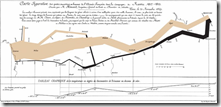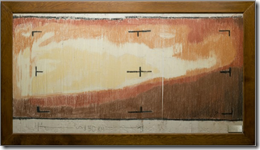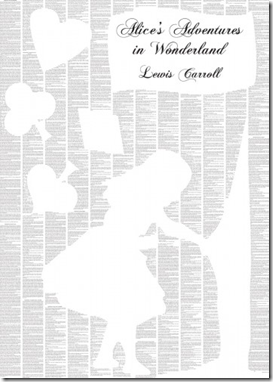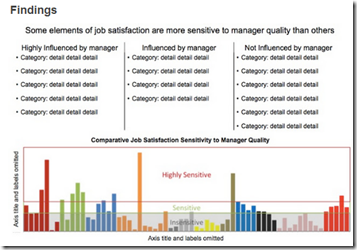Graphic Design (general) Archive:
OECD Statistics Explorer and Some Other Cool Shit
In: Graphic Design (general) Graphic Tools Innovative Interactive Maps
2 Feb 2012This is an example of why you keep checking back on mediocre data visualization tools. The last time I looked at the OECD’s explorer, it was slow, kinda clunky, and not very innovative. This morning I took another look. Wow! It has interactive choropleth maps, motion scatter plots, profile plots, time graphs, and cool histogram tools – and all of them have excellent filters and fine tuning controls, can be viewed over time, are smoothly animated and you’re allowed to load your own data.
But wait! There’s more! MUCH more! It turns out the explorer is just one tool created by the Swedish National Center for Visual Analytics (NCVA), who have constructed a set of Geovisual Analytics Visualization (GAV) Flash tools, including what you need to create your own statistics explorer. The NCVA also has a spin-off company that sells a desktop version of the explorer, a Flow Map explorer that draws proportionate arrows on maps to track flows, and a multi-dimensional explorer (which I only played with a little – but is very very cool).
Check out the scatter tables in the MDIM as a way to select data in the other two panels:
I’m almost embarrassed I haven’t seen these before. On the other hand, I love that there is such innovation going on – all the time.
12 Historic Visualizations
31 Jan 2012Browser Market Share
24 Jan 2012Aesthetically this is obviously quite nice. The roll-over data is snappy quick. The color selection is clear and intuitive. But there’s something about these nested arc charts that I just don’t like – they don’t seem like a very good way to illustrate historical data. It was created as a simple example of the Axiis data visualization framework – which offers several other Flex based graphic tools. (Hat tip to Ryan C for sending this along!)
Retail Sales
In: Graphic Design (general) Innovative Source: WSJ US Economy
13 Jan 2012Here’s an example of how more isn’t always better. Compare the interactive presentation of retail sales data below to the static version – both from the Wall Street Journal. In my opinion the static version presents the information in a much clearer and usable format. The only thing it’s missing is a chart for “total retail sales”. Regarding the interactive version, I’ve never liked stacked bar charts over time unless they illustrate very clear trends – with this many similar segments I think they are pretty silly (though the ability to drill down does alleviate this a smidgeon). (related article)
Descriptive Photos
4 Jan 2012One year and 3888 photos of the same scenery in one picture:
Globe on a drop of water: (how it’s done)
Color combining the rainbow by spinning an umbrella:
David Imus created a new map of the United States by applying careful attention to details, design, and symbology. The figure below compares Imus’ version (on the right) to National Geographics (left). An article over at Slate highlights some of the design choices Imus made, as does a pamphlet from Imus’ website. Personally, I think it’s great that people are re-examining the “standard” way to map things, and love the way Imus squeezed in as much information as possible, without sacrificing clarity – on the other hand, it apparently took him two years and over 6,000 hours to complete. Yikes!
Spineless Classics
27 Dec 2011Ending the Infographic Plague
27 Dec 2011Megan McArdle critques the content of several info-posters in an article over at The Atlantic". It’s sort of shooting fish in a barrel, considering the infogrpaphics she chose – but I give her props for taking the time to double check the data.
Correlation or Causation
12 Dec 2011Amusing examples of why you shouldn’t trust a lot of charts. Thanks to Sam F. for sending me the link!
Designer’s Toolkit
2 Dec 2011This is an interesting example because they really tried to have every part of the graphic convey information: color, size, and line type. (via The Big Picture)
If you look at the 2011 update of the report, you can see they have used a similar, but somewhat cleaner design. The labels are all clearer, and the use of a lighter background map and grey text improves the contrast considerably. Finally, I think using the color of the arrows instead of width for the value was a good call – as that’s easier for the eye to distinguish.
Unfortunately, I don’t know of any software that let’s you produce these quickly – you generally have to draw them by hand.
Preattentive Attributes
17 Oct 2011Over at Storytelling with Data, Cole provides a well written example of how to use preattentive attributes to make a better graphic. What the hell are “preattentive attributes”?
"Preattentive attributes" in the world of information visualization is a fancy descriptor for aspects of a visual that hit our iconic memory. Iconic memory is what happens in our brain before short term memory kicks in, before we even really know that we’re thinking. Iconic memory is tuned to pick up preattentive attributes: things like color, size, added marks, and spacial position (related Stephen Few article)
vs
This reminded me of some efforts on the education front to teach Graphicacy (Graphic literacy). While “graphicacy” is one of the dumber new words I’ve heard in a while, the concept is sound – the skill set of interpreting graphs. I have definitely witnessed people learning how to interpret new graph types, and it’s a fascinating process. The American Society for Innovation Design in Education (ASIDE) have done some interesting work on the subject if you want to look into it further:
The Value of Data Visualization
5 Oct 2011This 2 minute video from Column Five is excellent.
Clothing: Looks vs Comfort
25 Aug 2011Crayon Rainbow
15 Aug 2011Stephen von Worley re-designed Velociraptor’s Crayola Crayon color chart into a rainbow:
The radials make it much easier to see the most recent colors than in the original version:
He also tried several other shapes (below), and an interactive version. (via)
What is Chart Porn?
An addictive collection of beautiful charts, graphs, maps, and interactive data visualization toys -- on topics from around the world.
Categories
- Bailout (118)
- Chartporn Related (3)
- Commentary (21)
- Culture (669)
- Emerging Markets (66)
- Employment (245)
- Environment/weather (133)
- Finance (298)
- Food (92)
- Global Economy (373)
- Graphic Design (bad) (26)
- Graphic Design (general) (183)
- Graphic Tools (23)
- History (158)
- Housing (162)
- Humor (204)
- Innovative (183)
- Interactive (545)
- Internet/tech (97)
- Maps (578)
- News Media (34)
- Politics (329)
- Reference (97)
- Science (331)
- Source: Economist (101)
- Source: FT (92)
- Source: NYT (147)
- Source: Ritholtz (76)
- Source: USA Today (27)
- Source: Washington Post (90)
- Source: WSJ (135)
- Sports (58)
- Stock Market (74)
- Uncategorized (2)
- Updated regularly (76)
- US Economy (553)
- Video (22)
- Aram Korevaar: This chart is now being used as a projection in which countries such as China see themselves as in a [...]
- David: Welcome back Chart Porn! [...]
- J S: Thanks for the great story. Miss reading this blog. Hope to see you more active again. [...]
- jake: I lived in a DC row house for 6 years, and I'm writing this comment from my tiny 1 bedroom apartment [...]
- ronny pettersen: Hilarious and unfortunately accurate... ;-) [...]










































